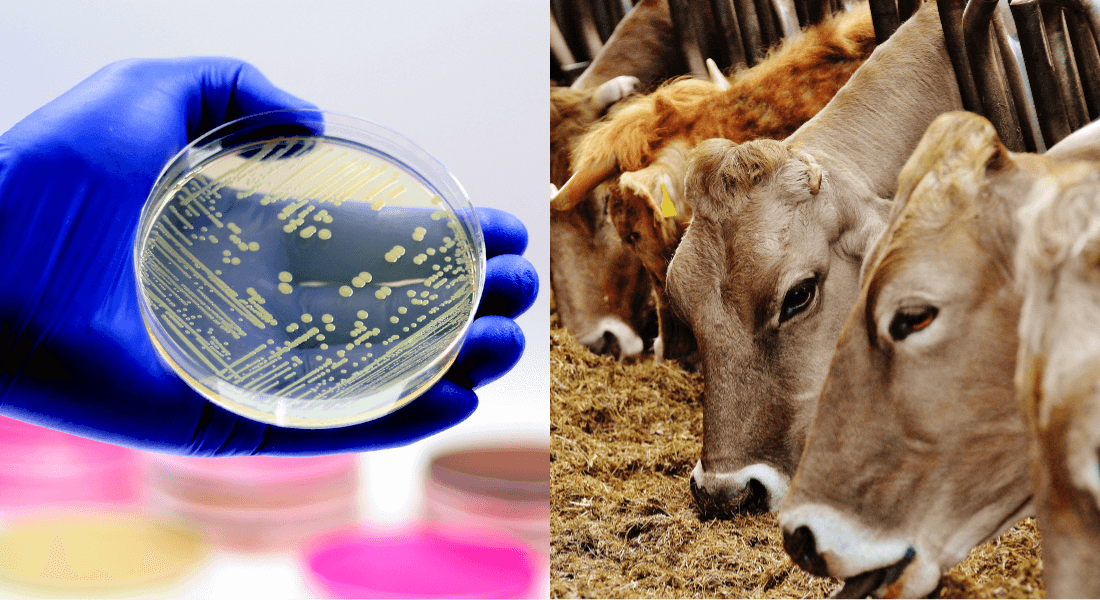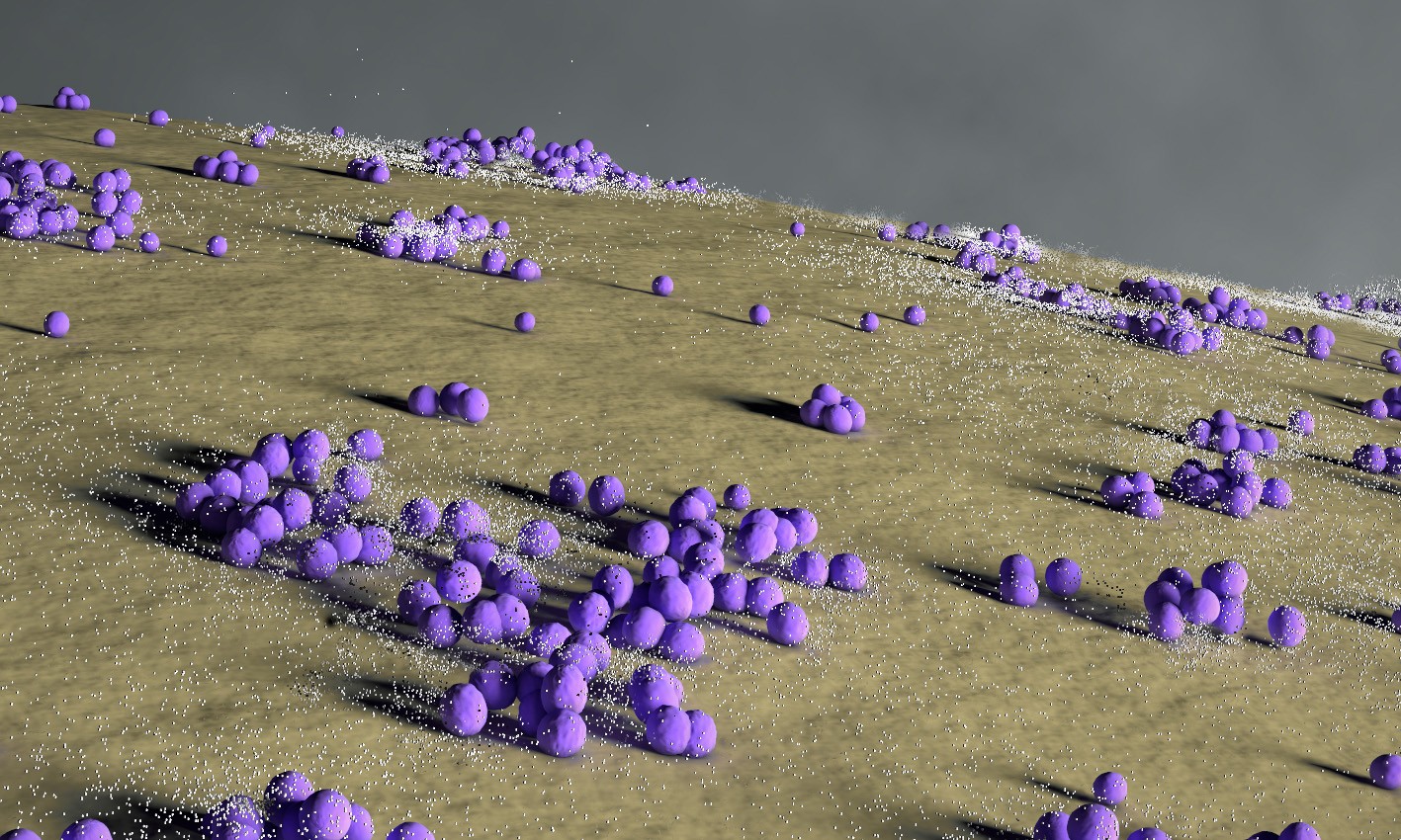Bacteria from cows show promising results in treating MRSA infections
Goats, horses and cows carry a bacterium that could become an effective weapon against increased antibiotic resistance in society. New research from the University of Copenhagen shows that signaling molecules from this bacterium can treat infections caused by multi-resistant Staphylococcus bacteria in an animal model as effectively as antibiotics.

Imagine two people talking over a walkie-talkie set. Successful communication depends on them being tuned to the same frequency. If others try to communicate nearby, interference can occur, and important messages may be lost.
Something similar happens in the world of bacteria. Bacteria communicate on their own “frequencies” when, for example, they coordinate an attack on a host by infecting a wound. However, other bacterial species can disrupt this communication, which, in turn, weakens the ability to coordinate and attack.
Staphylococci and MRSA
Staphylococci are common bacteria that live on our skin and in our mucous membranes. The most important species with respect to human infections is Staphylococcus aureus. It also exists in an antibiotic-resistant variant known as MRSA.
Normally, staphylococci are not dangerous, but they can become so if they enter the body by infecting a wound or if they enter the bloodstream. A staphylococcal infection can be treated with penicillin, while MRSA infections require special types of antibiotics and are therefore more difficult to treat.
Sources: Professor Christian Adam Olsen and sundhed.dk
Now, researchers from the University of Copenhagen have conducted the largest mapping to date of the frequencies – or signaling molecules – that Staphylococcus bacteria use to communicate.
Staphylococci are a family of bacteria that, among other places, live on our skin. One species, Staphylococcus aureus, also exists in antibiotic-resistant variants known as methicillin-resistant S. aureus (MRSA). MRSA strains are therefore more difficult to treat than regular staphylococci.
The researchers then used their new knowledge to effectively treat an MRSA infection.
“With our mapping, we can identify which signaling molecules are most effective against MRSA. We found that a signal from another Staphylococcus variant, Staphylococcus simulans, was very potent against S. aureus. Originally, the signaling molecule was isolated from a bacterial strain from a cow, but it is also present on goats, horses and humans,” says Christian Adam Olsen, professor at the Department of Drug Design and Pharmacology at the University of Copenhagen and one of the authors of the new study.
With a single dose of this signaling molecule, the mice could overcome an MRSA skin infection just as effectively as mice treated daily with an antibiotic ointment.
The researchers tested, in a mouse model, whether the signaling molecule from S. simulans could also disrupt MRSA signals and prevent infection. It could.
“In the experiment, we showed that with a single dose of this signaling molecule, the mice could overcome an MRSA skin infection just as effectively as mice treated daily with an antibiotic ointment, which is a current option for treating staphylococcal skin infections,” says postdoc Benjamin Svejdal Sereika-Bejder, who also contributed to the new study.
A new weapon against antibiotic resistance?
Antibiotic resistance is an increasing problem in society, which is why there is great interest in finding alternative treatments for bacterial infections. Therefore, the researchers also investigated whether bacteria would develop resistance towards treatment with the signaling molecule.
“No one has previously tested whether staphylococci develop resistance towards treatment with these signaling molecules, as we see with antibiotics. In our experiments, we observed that under laboratory conditions, the bacteria did not develop resistance even after 15 days. This is very promising but will require further testing in animal models,” says Benjamin Svejdal Sereika-Bejder.

The illustration shows staphylococci in purple on a surface such as skin. The signaling molecules are shown as small white dots. Illustration: Jeppe Paustian.
This alternative technique weakens the bacteria’s ability to communicate effectively but does not kill them, as is the case with antibiotics. The bacteria are allowed to live but have a harder time coordinating an attack on the host’s immune system.
“The explanation is likely that there is no evolutionary pressure on the bacteria to develop resistance, as they do not perceive the signaling molecules as being lethal to them. They are also encountering the signaling molecules from other bacteria in their natural environment,” says Christian Adam Olsen.
Read the study: “Mapping of quorum sensing interaction network of commensal and pathogenic staphylococci”.
Contact
Professor Christian Adam Olsen
Department of Drug Design and Pharmacology
Email: cao@sund.ku.dk
Mobile: +45 22 28 20 06
Postdoc Benjamin Svejdal Sereika-Bejder
Department of Drug Design and Pharmacology
Email: benjamin.bejder@sund.ku.dk
Phone: +45 35 33 65 67
Communications Adviser William Brøns Petersen
UCPH Communication
Email: william.petersen@adm.ku.dk
Mobile: +45 93 56 55 80
